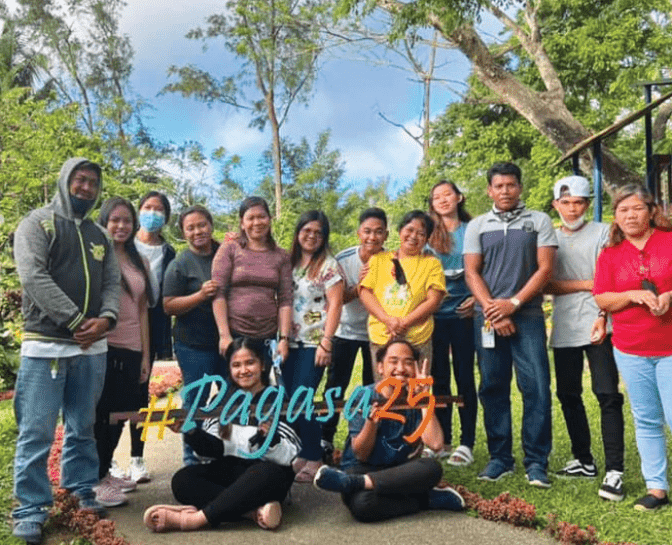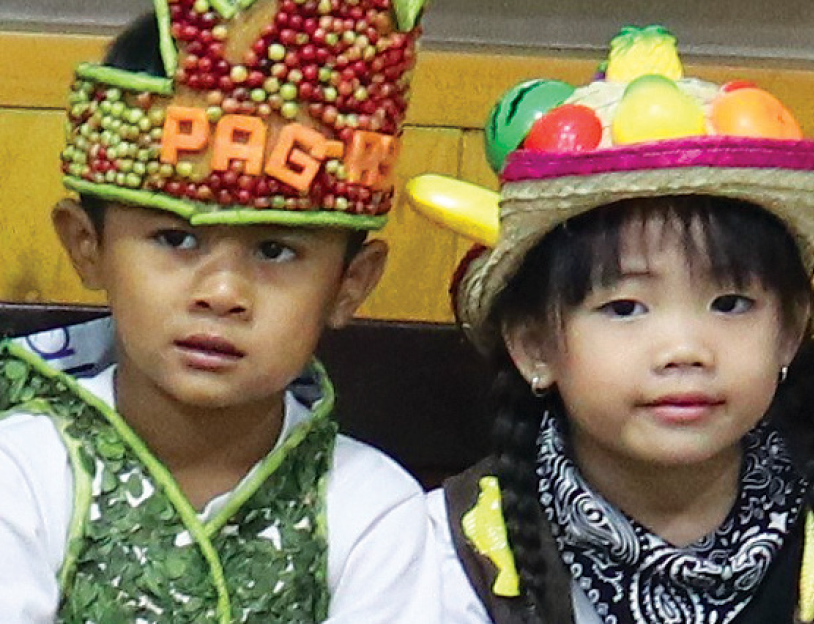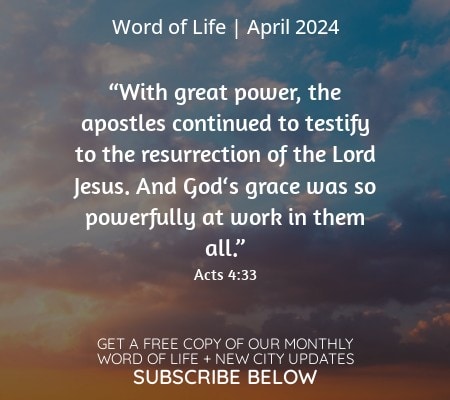Twenty-five years ago, Tagaytay wasn’t as progressive as it is now. In fact, the deep well near our three-storey building was the only source of safe drinking water in our place at that time. For that reason, many locals came to fetch water here. The parents usually brought along their kids to help them get their regular supply of water.
In the 1980s, the Focolare Movement was starting its center of formation in Tagaytay. First, there were the focolarinos and the priests, and later, youth and seminarians came to deepen their knowledge and experience of the Movement’s spirituality of unity.
Every Saturday afternoon, the Gen boys and Gen seminarians (young people of the Focolare Movement) would gather children for catechism and spiritual formation sessions as part of their program. They also played and then shared snacks in the small stockroom of the old carpentry shop. In the spirit of the Focolare Movement, Andrew Camilleri, a Maltese focolarino, made a simple but concrete experience of loving one’s neighbor. From this act of love, Pag-asa1 came into existence.

One Saturday, a boy who attended the catechism lessons asked Andrew: “Who is Jesus?” Andrew lifted the boy so he could reach and touch the tabernacle in our chapel after telling him about Jesus. From the smile of that child, Andrew saw his great joy after touching the tabernacle and knowing about Jesus. However, this boy could not see what he was touching, for this boy is blind in one eye and almost blind in his other eye. After that, they started to visit the places where the children live, and there, they came face to face with the harsh realities afflicting the lives of many families in Tagaytay.
That day made a great impression on Andrew. So overflowing was his joy that he couldn’t resist sharing it with the Focolare community right away. He later wrote about this experience to his friends in Rome. He wanted to help that child get surgery for at least one eye and financial support for the other children who gathered there every Saturday. At that time, Natalina and Flavio Meghini (among the first sponsors of Pag-asa who continue to support it) had just lost their son Silvio in a car accident. Silvio’s death touched the hearts of friends and relatives who immediately gave spiritual and financial support. The amount collected was sent for the child’s eye surgery and to support his studies. This help was also extended to his siblings, and many other children.
To help meet the children’s food expenses, their mothers made atchara (papaya pickle), coconut jam and peanut butter to sell. The young people of the Focolare Movement collected their fagotto (bundles of used clothing) and occasionally held a rummage sale to supplement the expenses of the social center.
With the help of Bukas Palad Tagaytay, the other social center of the Focolare in Tagaytay, we learned many positive experiences and good practices. Soon after, we started our own Daycare Center with three students.
After some Japanese visitors came and donated yellow and blue school uniforms, our students increased in number and had to be divided into two groups.
At the same time, with the help of donations from friends in other Focolare communities, including the New Families Movement (families in Europe and the US that promote social actions including literacy and work training as well as parenting skills for adults) around the world, we opened our Discount Store where beneficiary families get subsidized rice, sugar, and milk.

Although our social center has greatly developed with many activities and projects, there is still so much to be desired. We aspire to be a social center that is better equipped and able to assist our beneficiaries. Despite our limited means, we are proud of what we have managed to offer for the past 25 years: Daycare facilities, support for the children’s basic education like providing school bags, books, clothes, and financial assistance for the families. These might seem too little like the five loaves and two fish in the Gospel, but God has used the little we have to make a difference in the lives of the needy people around us. Moreover, there is something special and unique in our social centers: the Gospel life that we directly or indirectly share with our beneficiaries. Little by little, we have helped them enter into an experience of reciprocity that allows them to also give to others. In fact, many of the parents of the beneficiaries have given up their slot for others who are more in need when they were able to uplift their lives. There are others who, while being beneficiaries and thus, still in need, share rice and other foodstuffs with their poorer neighbors who are not members of Pag-asa. When our beneficiaries who have graduated from college get a job and earn a decent living, they return to Pag-asa to organize a feeding program or donate a sum of money to our social center.
The life of unity and love of the Focolare also gave the people working in Pag-asa a purpose in life and something to look forward to — hope for a better life where needs are met through the free sharing of goods.
Pag-asa contributes to the development of the human person in many communities in Tagaytay. Through various programs, it helps alleviate poverty and builds unity among families in these communities. We have made them aware that they are part of something greater than themselves by giving them opportunities to connect with people from other communities as well. Recently, Pag-asa has also started to give assistance to indigent families in Noveleta, Cavite.
From the small stockroom of the old carpentry workshop where it all started, Pag-asa has grown and, later, was able to acquire the entire building. Through the years, a variety of facilities were added to better serve the needs of its members. Aside from the two classrooms of our Daycare Center, we also have a small library and computer learning center for our education program, a medical clinic and a dental clinic for our health program, and a youth development center where activities are carried out for the social, ethical, emotional, physical and cognitive development of our youth beneficiaries.
Pag-asa has so far produced 73 professionals, many of whom are teachers, including the boy who once asked “Who is Jesus?” Since 1997, Pag-asa has been true to its name, continuing to give hope to many children and their families.
Andrew Camilleri, Jose Aranas, Frank Schmelzer and Heero Cayasa
1 A Filipino word meaning “hope.”




